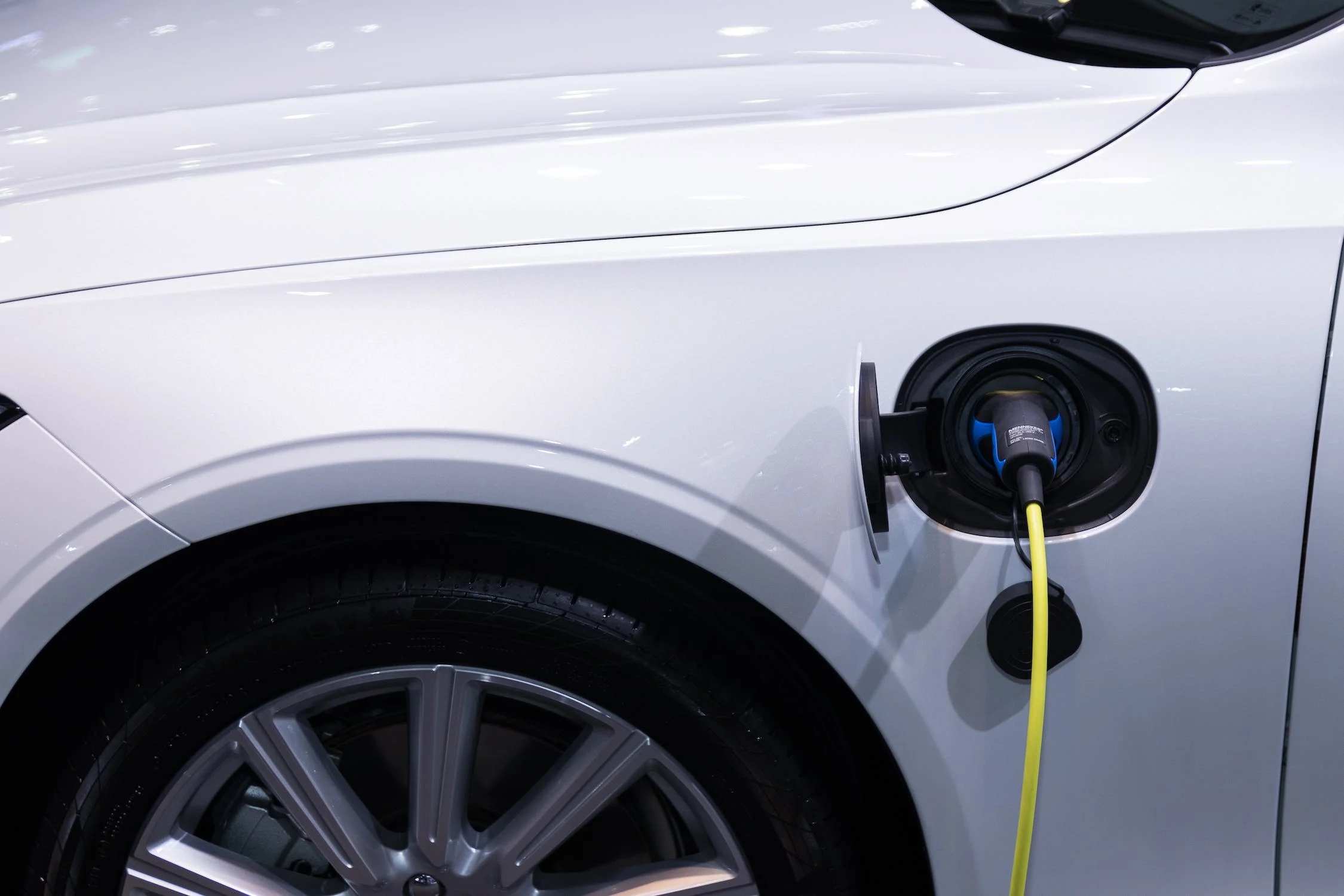Navigating the Micromobility Charging Landscape

A hot topic these days is charging infrastructure, the german micro-mobility operator Tier recently landed a €250M investment from Softbank to establish its energy network. Why is infrastructure so important anyway?
Charging infrastructure is seen as a key component in driving per charge costs down from the HIGH single digit $ and € numbers we have seen in the last years (Which made up almost half of the mobility operators cost base) down to LOW single-digit numbers (2-3 $/€ per recharge) that will make micro-mobility operations financially sustainable.
The legacy operating model of micro-mobility operators comes with a big environmental impact. Gig-workers and logistics teams have been driving combustion engine vans filled with discharged and broken vehicles back and forth to warehouses for charging and repairs.
Cities and their inhabitants have also grown weary of scooters thrown on the pavement. Often, the rider has run out of battery and simply abandoned the vehicle on the sidewalk or cycling path, leaving behind a useless piece of metal for others to trip over.
This article goes through the upsides and downsides and opportunities of the two leading solutions in the market.
Charging Stations

(Source: TechCrunch)
Several companies have been working on addressing both the issues of free-floating micro-mobility by moving back towards docked mobility, modelled after the many well-tested docked bike and ebike sharing schemes that have been emerging in cities, mainly over the past 10 years.
This operational model requires users to start and end their rides at designated locations in a city where parking racks are set up, which may work great when infrastructure is well built out and there are stations at every block, but may also cause disappointment and stress when vehicles are not available or when you arrive to the train station at rush hour and there are not slots available where you want to go.
Strengths
Parking
Setting up charging rack implicitly means that you are also helping solve the parking situation for scooters and bikes. Research from Oslo shows that when parking racks are available there are many less scooters poorly parked.
Hub
Setting up a parking rack gives customers a fixed location where they can go and expect to find vehicles.
Security
Having the vehicle locked into the charging rack reduces the risk of theft.
No Logistics
When users park the vehicles in charging racks there is no need for an operational team to carry out that task.
Weaknesses
Docked, not dockless
Docking stations goes against the basic free-floating paradigm that has made scooters popular, having true door-to-door transportation. Sure, entirely docked bike systems work, but they are usually heavily subsidized by the city. Because the stations are expensive to establish and it is not as convenient for the end-users.
Curbside locations
The operators will want the charging stations to be on central curbside locations which can be difficult and/or expensive to access in order to scale the network.
Space Limitation
The number of vehicles possible to charge in one location is limited by the parking space available, over-capacity of parking and charging spaces is required in order for the system to operate smoothly.
Suppliers
- Swiftmile
- Charge
- Duckt
- Kuhmute
- Bikeep
- Nubsee
- Knot
- Samocat
- Magment
- Parkent
- Tranzito
- Oonee
- EnergyBus
Opportunities
Standardization
Most station suppliers have a proprietary connector that is added to the different vehicles and allow them to be docked and charged in their network. This is a process which is more or less convenient and inhibits the growth of the network. Cities are much less likely to invest in fixed infrastructure that needs to be replaced at the end of each tender period. Energybus has been working on an open design of a standard charge & lock connector as well as communication protocol for several years, which will become commercially available in 2021.
Wireless charging
Magment and a few other companies have created wireless charging concepts where in vehicles are usually charged through a coil in the pavement below the vehicle. This eliminates any mechanical wear and tear thus reduces the need for service.
Charging Plugs
Not every location has the possibility to put up a rack. LEON Mobility addresses this with the Nubsee that is a small wall or pole-mounted charger for a single vehicle. A great contribution to making charging slightly more “dockless”.
Solar charging
Where grid connection is difficult or for a moveable charging suitable for quick or temporary deployment solar powered charging stations can be great. An american startup called Optivolt Labs even have a stack that makes it simpler to integrate solar ON the vehicles. Basically getting a self-charging vehicle which surely could be beneficial for some locations.
Battery Swapping
The biggest operational change in micro-mobility the last year was the shift to battery swapping vehicles by all the major Europeans players. In the chase for cutting operational costs, battery swapping was added as a mandatory for all new vehicles.

As timelines were pushed, most projects opted to reduce the technical risk by building the battery in a very similar way as they previously had done, just adding a pigtail connector and a lockable hatch to their existing scooter designs.
Some pioneers such as Feishen and Pushme saw what was coming and had more intricate designs prepared for user swapping. Operators also saw a possibility to distribute charging, especially in large cities like Paris, London or New York, where long distances and traffic congestion make it extremely inefficient to go back and forth to a warehouse in the city outskirts.
Now with the second and third generations of vehicles being defined, integrated user swappable batteries are high up on most operators requirement specifications. Not all operators agree that it makes sense to rely on unqualified personnel to swap the batteries. But as the savings that can be realized from making a less user-friendly swapping solution is very marginal and the potential downside of not allowing user swapping is a huge business risk, the industry is moving quickly in the user swappable direction.
Strengths
Fleet uptime
Maximizes fleet uptime, a boost of ~5% (3 hour charge time/2.5 days between charges) compared to charging the battery with a charger.
LEVs for operations
More efficient logistics by allowing the use of light emission free vehicles (Such as cargo bikes) to transport batteries.
Easier Service
Replacement of batteries does not require the vehicle to be taken in for repair and it is now easier to separate the economics of the batteries with the rest of the vehicle.
Scalability
The network is comparably easy to scale due to possible separation from vehicle parking. A swapping station is easier to fit and does not require a curbside location.
Utilization
End-user swappable only
Helps operators increase the utilization of low battery vehicles, since incentives can be offered for those vehicles and range is practically unlimited with a well built out battery swap network.
Market Penetration
End-user swappable only
The incentives given out to customers for swapping batteries help operators penetrate new cost-sensitive market segments and also drives brand loyalty (let’s face it, it’s actually quite expensive to ride scooters in many markets).
Weaknesses
More Batteries
Requires more than one battery per vehicle. At Teleport we are calculating 1.35 batteries per scooter, with some room to increase that efficiency over time.
Packing
Swappable batteries are less space efficient than integrated ones
Moving parts
More moving parts in the vehicle that could require service
Reliant on customer performance
End-user swappable only
Additional point of failure in allowing unqualified personnel to perform a critical task, the industry has previous experiences of this from the prime gig-working days of charging.
Suppliers
- Teleport
- Swobbee
- Sun Mobility
- OKAI
- Gogoro
- Ionex
- Raido
- Immotor
Opportunities
Standardization
A standardized battery format does not only make batteries interchangeable between different vehicles, it will also allow operators to access economies of scale benefits by collaborating in the same network, multiplying the density of both swapping stations as well as vehicles in need of swapping.
It will also make it much easier for consumers to compare price and quality of batteries, creating more satisfied customers and a healthy competition that will push both price as well as battery and vehicle innovation.
Furthermore, the LEVs are improving so rapidly that in a few years operators will be pressed to invest in new vehicles to stay relevant and competitive. Then, the second hand value of both vehicle and battery are greatly improved by having the battery format standardized.
The second hand value and the possibility to industrialize disassembly & recycling reduces the battery’s life cycle impact and makes the battery much more attractive for Battery-as-a-Service financing. Operators that pay up-front for batteries waiting to get them delivered from china will quickly be outcompeted in the current environment.
In a few years, battery swapping is nothing that will exclusively power shared fleets of scooters and ebikes. Package and food delivery companies as well as individuals owning scooters and eBikes will also utilize the network. This will continue to push the cost down and increase the density of the network.
ESS system
With the addition of an inverter battery swapping stations can be used by real estate owners not only to swap vehicle batteries and provide a transportation service for customers and tenants. The batteries are also an important asset in their electrical installation. Buildings with solar panels can charge the batteries with excess solar instead of selling it back to the grid and they can cut consumption peaks from heavy machinery such as elevators. Giving the host lower utility bills as well as a power backup system.
Conclusions
There is not likely to be a one solution fits all, but different solutions are suitable for different geographies and regulations. In most cases, parking, charging and swapping solutions will co-exist and complement each other.
If a city strongly believes in docked micro-mobility and is willing to dedicate curb-side locations with electrical connections for a standardized vehicle charging station, it’s a great solution! If there is already a place to park, always consider integrating charging.
A battery swapping network is easier to establish as parking is separated from the charging. It increases fleet uptime and user swapping drives utilization by removing range as a factor in choosing a vehicle. Thus it is the best solution for dockless systems.
Operators also carefully need to calculate the need for in-field teams in their markets, even if charging could be made completely autonomous there will always be a need for in-field teams to do maintenance, rebalancing and vehicle rescue.
There are also many smaller startups in the micro-mobility charging space, currently with limited differentiation. This means that the space is very dynamic and innovative, but that a winning solution has not quite emerged yet. Besides innovation – consolidation and standardization are two parameters that we believe will define the winners in this market.
Author:
Simon Fellin is CEO of Teleport, a battery swapping service provider that has created an open-source, swappable battery standard. Simon has a background in the automotive industry but has spent the last five years in executive positions in the Light Electric Vehicle industry with safety and sustainability as guiding principles.
Published in Telematics Wire





